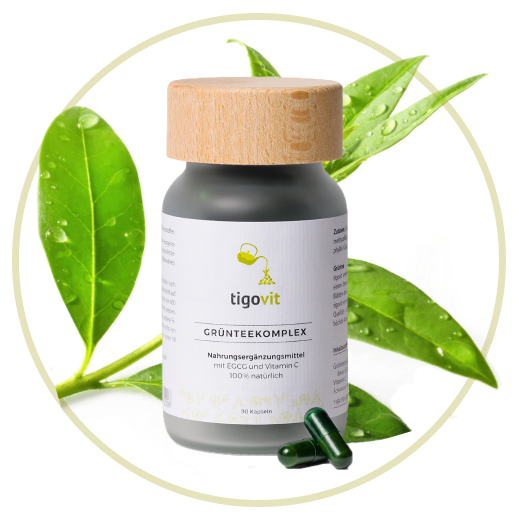
Omega 3 ist eine essenzielle, mehrfach ungesättigte Fettsäure, die Ihr Körper für wichtige Funktionen braucht. Dazu gehören die Verdauung, Muskelaktivität, Blutgerinnung, Sehvermögen, das Gedächtnis und viele weitere Prozesse.
Omega 3 ist hier besonders wichtig für die Zellteilung und die Funktion der Zellrezeptoren. Diese besonderen Fette werden idealerweise aus Meeresfischen gewonnen, die nicht oder mit nur wenig Umweltgiften belastet sind.
Omega-3-Fettsäuren gelten als essenziell, da Ihr Körper sie nicht selbst herstellen kann. Sie müssen durch eine gezielte Diät oder Nahrungsergänzung zugeführt werden. Dabei herrscht oft Verwirrung, welche Omega-3-Fettsäuren für eine optimale Gesundheit tatsächlich notwendig sind.
Zwei Quellen für Omega-3
Sowohl pflanzliche als auch tierische Omega-3-Fettsäuren haben ihre erste, chemische Doppelbindung an dritter Stelle – daher der Name „Omega 3“. Aber die unterschiedliche Länge der Kohlenstoffkette macht einen wichtigen Unterschied aus, wenn es um die Bioverfügbarkeit und die biologische Wirkung der Öle geht.
Die Öle unterschiedlichen Ursprungs können also nicht beliebig ausgetauscht werden. Es genügt nicht, pflanzliches Omega 3 nur über die Nahrung aufzunehmen. Hier ist es notwendig, eine Ergänzung hinzuzufügen, um das gewünschte Ergebnis zu erzielen. Aber welche Ergänzung genau? Omega 3 oder das vegane (marine) Omega 3? Oder müssen sie zusammen eingenommen werden, da sie sich nicht ersetzen können?
- Omega 3 von Meerestieren (fetter Fisch, Fischöl, Garnelenöl etc.) enthält hauptsächlich Docosahexaensäure (DHA) und Eicosapentaensäure (EPA), die ein Teil einer langen Kette von Kohlenstoffatomen sind.
- Omega 3 aus pflanzlichen Quellen (Leinsamen, Leinöl, Chiasamen, Walnüsse und grünes Blattgemüse) enthält hingegen Alpha-Linolensäure (ALA), eine etwas kürzere Kette von Kohlenstoffatomen. Pflanzliche Quellen sind vollständig frei von langkettigen Säuren DHA und EPA.
- Omega 3 aus marinen Mikroalgen mit EPA und DHA ist die „reinste“ Quelle für essenzielle Omega 3 Fettsäuren. Nahrungsergänzungsmittel auf Algenbasis enthalten keine Giftstoffe, wie sie manchmal in Nahrungsergänzungsmitteln auf Fischbasis gefunden werden können.
Können wir tierisches Omega 3 durch pflanzliches ersetzen?
Die pflanzliche Omega-3-Fettsäure Alpha-Linolensäure (ALA) ist eine Vorstufe von EPA und DHA. Allerdings wird hier ein Enzym benötigt, um das kürzere ALA (18-Atome) in ein längeres Omega-3 (20 oder 22-Atome) umzuwandeln. Bei den meisten Menschen arbeitet das dafür vorgesehene Enzym aber nicht sehr gut. Der Umwandlungsgrad zu Omega 3 ist daher sehr gering.
Im Allgemeinen wird bei den meisten Menschen weniger als ein Prozent von ALA in EPA umgewandelt. Dabei hängt der Umwandlungsgrad in Ihrem Körper von entsprechenden Mengen anderer Vitamine und Mineralstoffe ab.
Unser Körper verarbeitet eine sehr kleine Menge pflanzliches Omega 3 in langkettiges Omega 3, was nicht wirklich ausreichend für eine gute, gesundheitliche Basis ist. Es kann an genetischen Aspekten liegen, aber insgesamt schreibt man kurzkettigen Omega-3-Säuren nicht die gleichen biologischen Wirkungen zu, wie den langkettigen Omega-3-Fettsäuren EPA und DHA.
Aus diesem Grund ist Omega 3, das aus marinen Mikroalgen gewonnen wird, der beste Ersatz für tierisches Omega 3. Algen sind eine gute Quelle für Omega-3-Fettsäuren, die später über die Nahrung zu den Fischen gelangen.
EPA und DHA sind wichtig für die Gesundheit
DHA ist besonders wichtig, weil es ein Bestandteil jeder Zelle unseres Körpers und besonders wichtig für unser Gehirn ist. Mehr als 90% der Omega-3-Fettsäuren im Gehirngewebe sind aus DHA, und die normale Entwicklung des Gehirns eines Fötus hängt von der Verfügbarkeit von DHA ab. Alle anderen Omega-3-Säuren werden nur in Spuren im Gehirn gefunden, einschließlich der ALA-Säure, egal wie viel ALA Sie konsumieren.
Tatsächlich gibt es in der Blut-Hirn-Schranke, in der Plazenta von Schwangeren und wahrscheinlich auch in der Leber spezifische Stoffe langer Omega-3-Fettsäuren, die diese Moleküle sehr präzise zu den Zellmembranen transportieren. Ein solcher Transport existiert jedoch nicht für kurzkettige Omega-3-Säuren, die aus Pflanzen stammen.
Hier geht es nicht darum, die Bedeutung der pflanzlichen Omega-3-Fette zu schmälern. ALA-Fettsäuren werden wirklich von jedem Organismus benötigt, wir brauchen nur deren Überschuss nicht. Aber wie bereits erwähnt, gibt es auch Omega-3-Fette pflanzlichen Ursprungs, die die ursprünglichen Träger von Omega-3-Fettsäuren sind, wie zum Beispiel Algen, die die tierischen Omega-3-Fettsäuren vollständig ersetzen könnten.
Aus Algen gewonnenes Omega 3 – Good News für unseren Planeten
Eine gute Nachricht für alle Vegetarier und Veganer (und auch für Fisch) ist, dass hochwertiges Omega 3 aus Algen dazu beiträgt, ausreichend EPA und DHA in ähnlicher Menge wie Omega 3 Öl tierischen Ursprungs zu sich zu nehmen.
Eicosapentaensäure (EPA) und Docosahexaensäure (DHA) sind die beiden beliebtesten und wirksamsten Omega-3-Fettsäuren. Ihre traditionelle Quelle ist Öl aus Fischen, die in den kalten Meeren und Ozeanen leben. Massenfischerei ist jedoch für unseren Planeten auf Dauer nicht nachhaltig, insbesondere wenn wir die Nachfrage nach dieser Art von Produkten oder Substanzen weiter erhöhen.
Fisch als Quelle für Omega-3-Fettsäuren ist aufgrund des Geschmacks, Geruchs und der Liefermengen auf Dauer problematisch. Darüber hinaus hängt die Qualität von Fischölprodukten im Allgemeinen von der Fangsaison und dem Ort ab und kann durch die aktuelle Verschmutzung von Meer und Ozean stark beeinflusst werden. Der Prozess der Reinigung dieser Fettsäuren aus Fischöl ist außerdem ziemlich komplex.
Alle diese Komplikationen schränken möglicherweise die Verwendung von Fischöl als Lebensmittelzusatzstoff oder Nahrungsergänzungsmittel ein. Alternativ können neue Produkte auf Basis von Omega-3-Fettsäuren aus Algen hergestellt werden, wodurch die mit Fischölprodukten verbundenen Geschmacks- und Geruchsprobleme sowie offensichtliche Mängel im Produktionsprozess beseitigt werden könnten. Der Prozess der Kultivierung von Algen oder algenähnlichen Mikroorganismen zur Gewinnung von Ölen, die reich an Omega-3-Fettsäuren sind, wird als „Omega-3-Biotechnologie“ bezeichnet.
Algen enthalten eine beträchtliche Menge an Öl, das reich an mehrfach ungesättigten Omega-3-Fettsäuren (DHA und EPA) ist. Die getrockneten Zellen dieser Alge machen etwa 20% DHA aus, was sie zu einer sehr wichtigen Quelle dieser Omega-3-Fettsäuren macht. Interessant ist, dass Algen als DHA-reiche Zutat in der Ernährung von Zuchtfischen und Garnelen, aber auch von Hühnern verwendet werden.
Die Anwendung von mikrobiologischen DHA- und EPA-Omega-3-Fettsäuren auf die menschliche Gesundheit nimmt zu, und eine große Anzahl klinischer Studien wurde durchgeführt, um ihre Wirksamkeit zu bestätigen. Die Entwicklung verfeinerter Isolierungs- und Identifizierungstechniken ist für den Algenanbau wichtig. Neben dem hohen Anteil an Lipidbiomasse eignen sich Algen auch für verschiedene Produktionsstrategien, die den Anteil an Omega-3-Fettsäuren erhöhen. Veränderungen bei bestehenden Lipidextraktionsmethoden und der Einsatz von hochentwickelten Analyseinstrumenten haben die Ernte an DHA- und EPA-Säuren bei der Extraktion erhöht.
Durch die Kultivierung dieser Mikroorganismen sind die biotechnologischen Prozesse von Omega 3 zur Herstellung von DHA und EPA auf ein hohes industrielles Niveau gerückt. „Omega-3-Biotechnologie“ ist ein umweltfreundliches, „grünes“ und nachhaltiges Verfahren zur Herstellung von Omega-3-Fettsäuren.
Zukünftig wird die Erforschung verschiedener Algenarten oder mikrobieller Isolate, die einen schnellen Wachstum, einen hohen Biomasseanteil und eine gute Ölspeicherfähigkeit aufweisen, die Effizienz des biotechnologischen Verfahrens zur Gewinnung von Omega-3-Fettsäuren weiter steigern.
Quellen:
Authority Nutrition, DHA: A Detailed Review
Differentiation of ALA (plant sources) from DHA + EPA (marine sources) as Dietary Omega-3 Fatty Acids for Human Health
Lipids January 2011
Frontiers in Genetics July 12, 2011
BioMed Research International 2015, Article ID 645984
Mitochondrial Disease News August 31, 2015
American Journal of Clinical Nutrition June 4, 2014: 100 Supplement 1; 449S-452S




